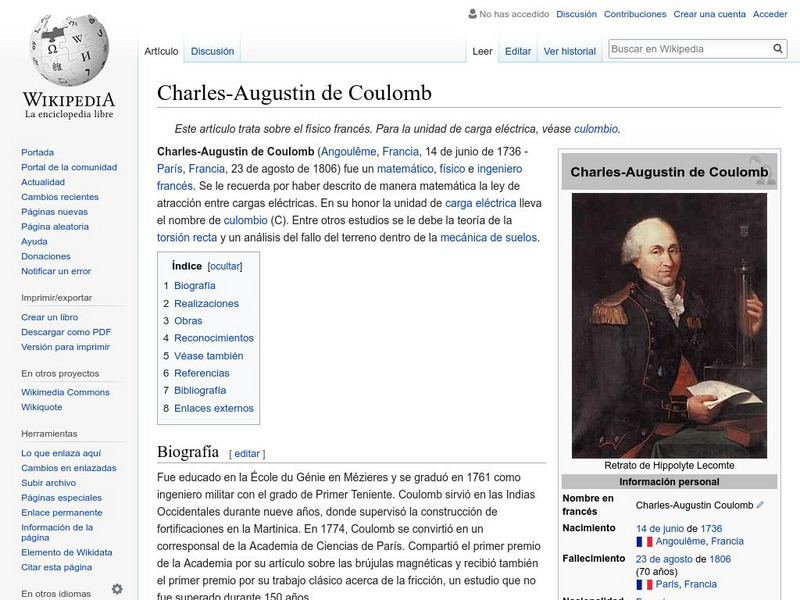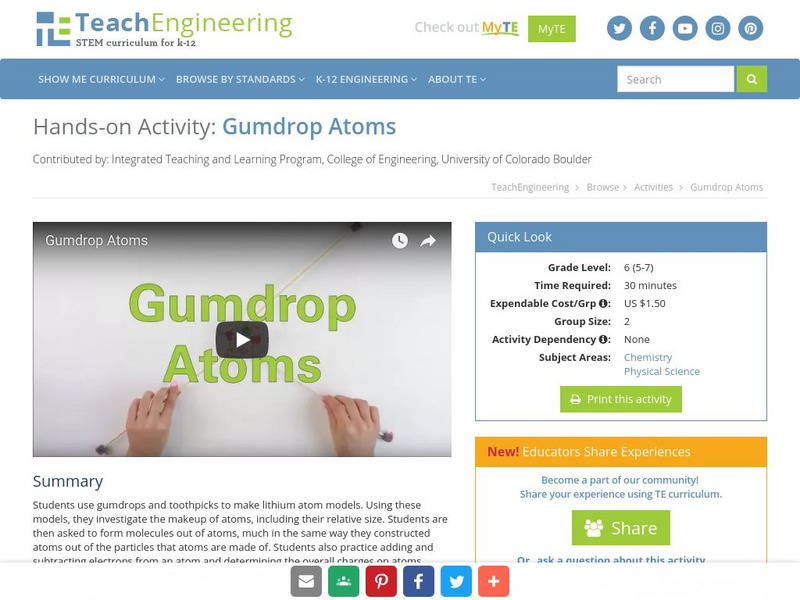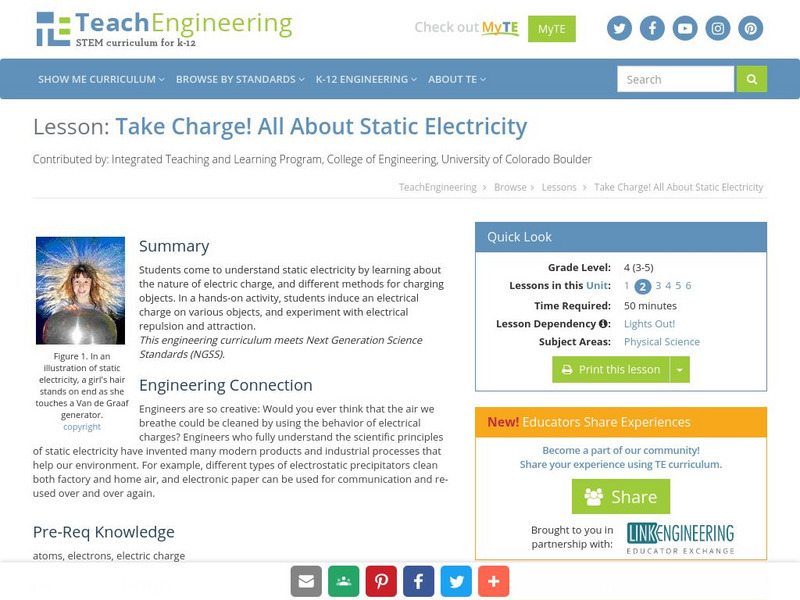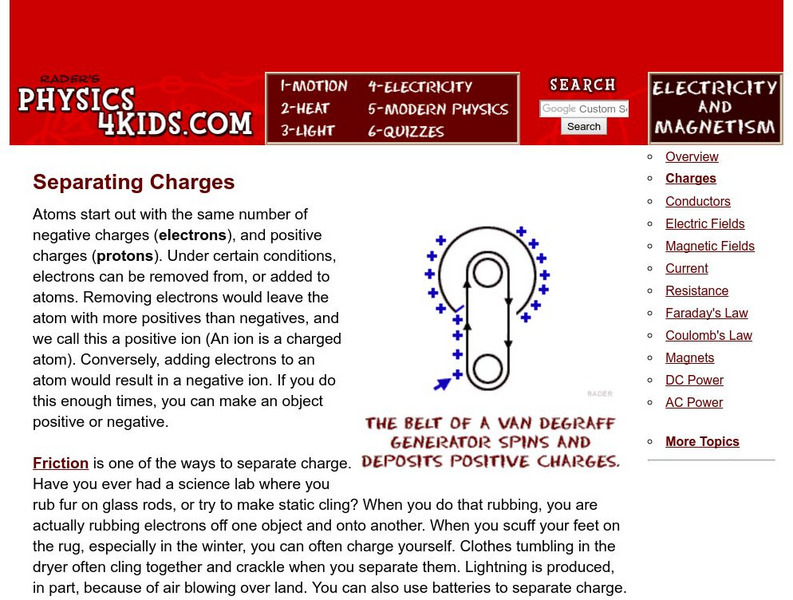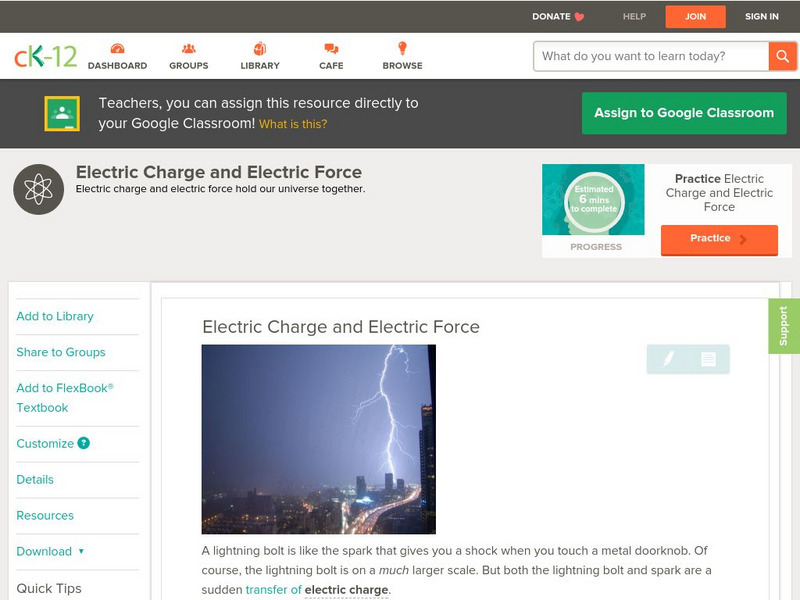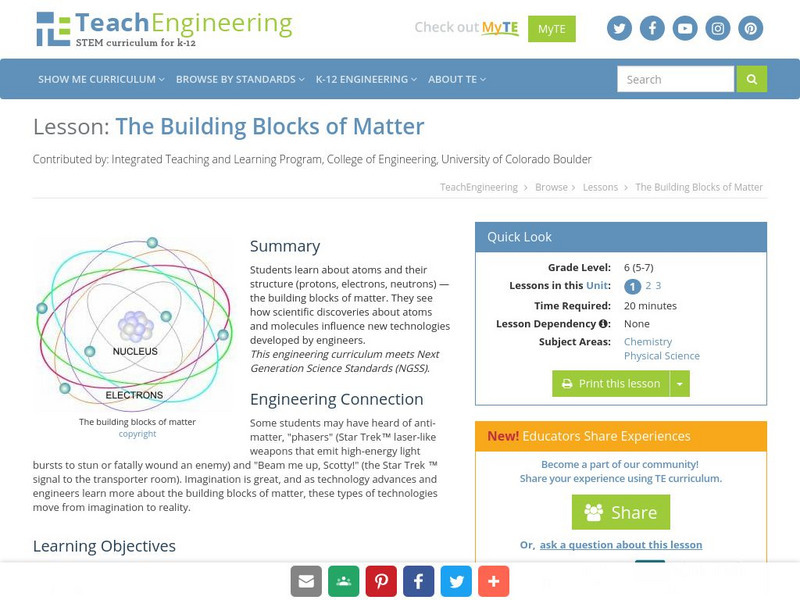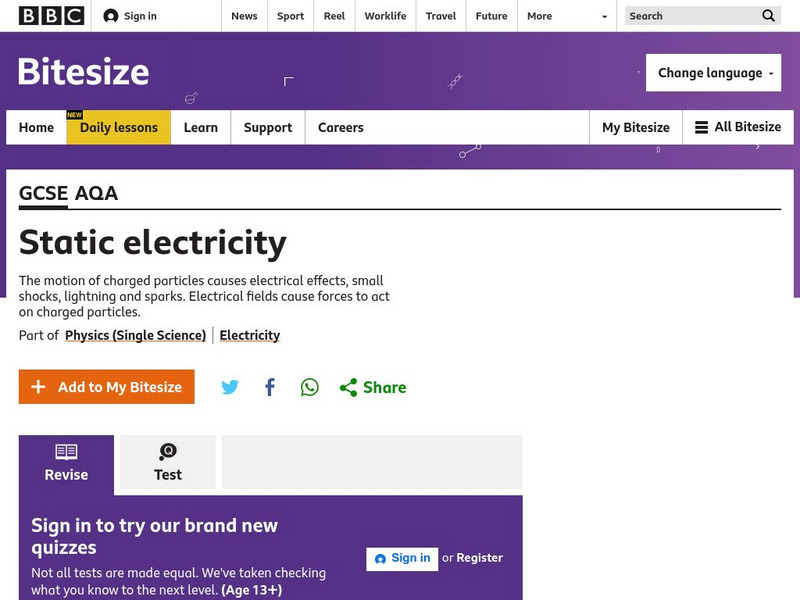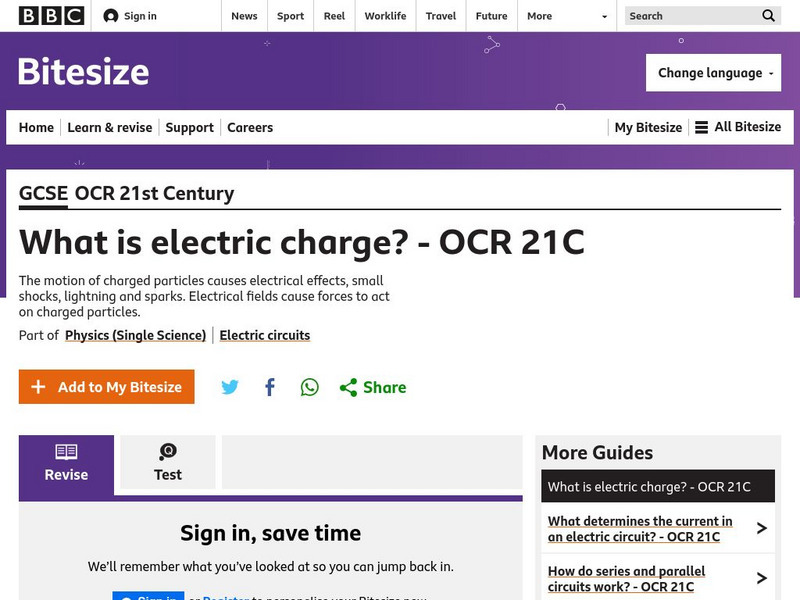Wikimedia
Wikipedia: Charles Augustin De Coulomb
Spanish-language site lets students discover the life and work of this physicist and engineer, who is known for his studies of electric charges.
Exploratorium
Exploratorium: Science Snacks: Magnetic Suction
An experiment to find out how an old-style doorbell works.
Exploratorium
Exploratorium: Science Snacks: Flying Tinsel
Can you make tinsel fly? In this activity, experiment with positive and negative charges to suspend tinsel into the air!
TeachEngineering
Teach Engineering: Gumdrop Atoms
In this activity, students make a model of a lithium atom using gumdrops and toothpicks. Using this model, they investigate the makeup of an atom, including its relative size. Students also practice adding and subtracting electrons from...
TeachEngineering
Teach Engineering: Take Charge!
Students come to understand static electricity by learning about the nature of electric charge, and different methods for charging objects. In a hands-on activity, students induce an electrical charge on various objects, and experiment...
Physics4kids
Physics4 kids.com: Charge It Up
Discover the science behind electrical charges. This brief overview describes changes in atoms that lead to the formation of electricity. Explanations are also provided for the topics of electrostatics and electric forces. The whole...
CK-12 Foundation
Ck 12: Physical Science: Electric Charge and Electric Force
[Free Registration/Login may be required to access all resource tools.] Describes what electric charge and electric force are and the electric forces between charged particles.
Physics Classroom
The Physics Classroom: Static Electricity: Aluminum Can Polarization Interactive
Visualize the underlying cause for the attraction between a charged and an uncharged object. The animation allows students to see the response of electrons.
Science Struck
Science Struck: Electromagnetic Energy and Why It Is Important
Explains what electromagnetic energy is, the history of its discovery, some terms used when talking about it, and gives some facts about it.
Physics Aviary
Physics Aviary: Velocity From Repulsion Lab
This lab was designed to allow students to look at the maximum speed an object can obtain when it is electrically repelled by a like charge.
TeachEngineering
Teach Engineering: The Fundamental Building Blocks of Matter
This lesson plan explores the fundamentals of atoms and their structure. The building blocks of matter (protons, electrons, neutrons) are covered in detail. Students think about how atoms and molecules can influence new technologies...
Physics Classroom
The Physics Classroom: Static Electricity: Lesson 2: Charging by Friction
Understand how to electrically charge an object by friction with this detailed description. Classrooms will benefit by extending the lesson with the interactive opportunity and follow up for comprehension with the "Check Your...
BBC
Bbc: Gcse Bitesize: Static Electricity
This lesson focuses on static electricity, including how particles can be charged by friction, and electrical forces and why they repel or attract each other. Includes a link to a test.
BBC
Bbc: Gcse Bitesize: What Is Electric Charge? Ocr 21 C
This lesson focuses on electric charges. Electric current is the flow of electric charge. Some insulating materials become electrically charged when they are rubbed together. A substance that gains electrons becomes negatively charged,...
TED Talks
Ted: Ted Ed: How to Squeeze Electricity Out of Crystals
It might sound like science fiction, but if you press on a crystal of sugar, it will actually generate its own electricity. Ashwini Bharathula explains how piezoelectric materials turn mechanical stress, like pressure, sound waves and...
CK-12 Foundation
Ck 12: Physical Science: Electric Current
[Free Registration/Login may be required to access all resource tools.] Explains what electric current and voltage are and why electric current occurs.
CK-12 Foundation
Ck 12: Third Grade Science: Physical Science: Static Electricity
[Free Registration/Login may be required to access all resource tools.] Discusses electric charge and electric force, and identifies ways that electric charge is transferred.
CK-12 Foundation
Ck 12: Fourth Grade Science: Physical Science: Static Electric Charge
[Free Registration/Login may be required to access all resource tools.] Discusses electric charge and electric force, and identifies ways that electric charge is transferred.
CK-12 Foundation
Ck 12: Physics Simulation: Lightning Rod
[Free Registration/Login Required] Learn about charge, electric field, and electric potential in the context of a lightning strike using this interactive simulation. A PDF worksheet is also available. Includes video tutorial. [3:49]
Concord Consortium
The Concord Consortium: Why Do Some Things Stick Together and Other Things Do Not?
In this learning module, students will observe interactions between objects, including objects with electric charges to identify patterns in how things interact.
Concord Consortium
The Concord Consortium: What Are Some Examples of Things That Stick Together and Things That Do Not?
In this learning module from The Concord Consortium, students will watch what happens when a Van de Graaff generator is used.
Concord Consortium
The Concord Consortium: What Are Some Patterns in How Things Stick Together or Push Apart?
In this learning module from The Concord Consortium, students will start to develop their own computer simulation models of how attraction and repulsion between charged objects work.
Concord Consortium
The Concord Consortium: What Effect Do Charged Objects Have on Uncharged Objects?
In this learning module from The Concord Consortium, students will will explore how uncharged objects interact with charged objects.
Concord Consortium
The Concord Consortium: How Do I Know if Something Is Positively or Negatively Charged?
In this learning module from The Concord Consortium, students will learn how to figure out whether an object has a positive or negative charge.


